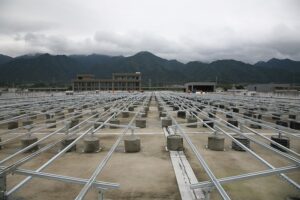
Rethinking Our Energy Systems: Community-Driven Clean Energy Initiatives
The world is facing unprecedented challenges when it comes to energy consumption and its impact on the environment. As climate change accelerates and the consequences of fossil fuel dependency become increasingly dire, there is a growing recognition of the need for a fundamental rethink of our energy systems. One of the most promising pathways toward sustainable energy is through community-driven clean energy initiatives. These projects empower local populations, foster resilience, and contribute to a broader fight against climate change, all while promoting economic development and social equity.
The Need for Change
Traditional energy systems have often been centralized, relying on large power plants that generate energy from fossil fuels. This model is not only environmentally harmful but also vulnerable to price fluctuations and supply disruptions. Moreover, it’s often disconnected from the communities it serves. In contrast, renewable energy sources like solar, wind, and community energy projects present alternatives that are more sustainable, resilient, and socially responsible.
As cities and towns grapple with inconsistent energy supply and an uncertain climate future, the call for localized energy solutions becomes more urgent. Community-driven clean energy initiatives offer a practical framework for localities to take control of their energy futures.
The Core Principles of Community-Driven Energy Initiatives
Community-driven clean energy initiatives are grounded on a few core principles that differentiate them from traditional energy frameworks. These principles include:
Empowerment
A key aspect of community-driven initiatives is the empowerment of local residents. When communities have a say in energy production and consumption, they forge stronger connections to their resources and develop agency over their environmental impacts. Empowerment leads to increased participation and investment in local energy solutions, fostering a culture of stewardship.
Collaboration
Community energy initiatives thrive on collaboration between various stakeholders, including local governments, non-profits, private companies, and residents. This multi-stakeholder approach ensures that different perspectives and interests are considered, leading to more inclusive decision-making and ultimately more successful energy projects.
Resilience
By leveraging local resources and capabilities, community-driven initiatives enhance the resilience of energy systems. Localized production reduces the dependency on centralized power systems that are vulnerable to disruptions from market fluctuations, natural disasters, or geopolitical crises. Furthermore, community initiatives often prioritize energy efficiency, fostering local solutions that cater to specific needs.
Sustainability
Community-led energy initiatives focus on renewable energy sources, promoting sustainability at the local level. By harnessing solar, wind, or other renewable resources, communities can drastically reduce their greenhouse gas emissions while empowering residents to take an active role in combating climate change.
Equity and Inclusion
A fundamental objective of community-driven energy initiatives is to promote equity and inclusion. Attention to energy justice ensures that marginalized communities, often disproportionately affected by pollution and climate impacts, are given a voice in energy decisions and reap the benefits of clean energy solutions. Moreover, these initiatives create jobs and local economic opportunities, contributing to a fairer distribution of wealth.
Case Studies of Successful Community-Driven Energy Initiatives
Several remarkable case studies showcase how community-driven clean energy initiatives are redefining energy landscapes around the globe. These localized efforts offer valuable lessons on overcoming challenges and maximizing the benefits associated with renewable energy adoption.
Brooklyn Microgrid, New York, USA
The Brooklyn Microgrid project is a pioneering community energy initiative that allows residents to generate, share, and trade renewable energy. By leveraging solar panels on rooftops, Brooklyn residents can contribute to a decentralized energy grid, reducing reliance on fossil fuels and increasing local energy independence.
This initiative harnesses blockchain technology to facilitate peer-to-peer energy trading, enabling residents to buy and sell surplus energy directly from one another. This innovative approach encourages energy production while fostering community ties, highlighting the untapped potential of localized energy systems.
Samso Island, Denmark
Samso Island is an award-winning example of a community that successfully transitioned to 100% renewable energy. The island’s residents banded together to invest in wind turbines, solar panels, and energy efficiency measures that have transformed their energy landscape.
What makes Samso’s initiative particularly noteworthy is how it became a model for sustainable living, not just in energy consumption but also in agricultural practices and tourism. The community-driven approach enabled the residents to make informed choices, building consensus and commitment toward a common goal.
Mosaic, California, USA
Mosaic, a community solar initiative in California, allows residents to invest in large-scale solar arrays, even if they do not have access to suitable rooftops for solar panels. This important community-driven approach democratizes access to renewable energy, reducing barriers to entry for low- and middle-income households.
The program empowers residents by providing them with equity in the solar system while allowing them to benefit from lower utility costs and cleaner energy options. Such initiatives illustrate how community-driven projects can turn obstacles into opportunities, underscoring the importance of inclusivity in the energy transition.
Barriers to Community-Driven Energy Initiatives
While community-driven clean energy initiatives present a viable pathway toward sustainable energy futures, several barriers can impede their success. Awareness, acceptance, and policy frameworks are vital factors that must be addressed for these initiatives to thrive.
Lack of Awareness and Education
In many cases, communities may simply be unaware of the possibilities and benefits of clean energy initiatives. Awareness campaigns and educational programs can be critical in informing residents about their options and empowering them to take action.
Regulatory Challenges
Complex regulations surrounding energy generation and sales can stifle community-driven projects. Inadequate policies can create barriers to entry for fledgling initiatives, often requiring advocates to navigate convoluted bureaucratic processes. Simplifying regulatory frameworks and providing supportive policies for community-driven initiatives is essential for progress.
Financing and Investment
Securing financial investment can be a significant challenge for community energy initiatives, particularly for economically disadvantaged communities. Innovative financing solutions, such as community investment funds or public-private partnerships, are vital for fostering viable projects.
Social Acceptance and Community Engagement
Community buy-in is crucial for the success of energy initiatives. Resistance from community members can stem from concerns about local environmental impacts, aesthetics, or the perceived reliability of renewable energy sources. Engaging with communities through participatory planning, transparent communication, and consideration of local concerns can help to foster acceptance.
The Role of Policy in Supporting Community-Driven Initiatives
To realize the full potential of community-driven clean energy initiatives, supportive policy frameworks are vital. Policymakers at all levels must understand the importance of empowering communities to take control of their energy needs while ensuring social equity in energy access.
Incentives for Clean Energy Projects
Governments can incentivize community-driven clean energy initiatives by offering financial support, tax breaks, or grants. These incentives can help address some of the financial barriers that community projects often face. Furthermore, streamlining permitting processes and investing in infrastructure can create a conducive environment for clean energy development.
Capacity Building and Technical Assistance
Policymakers should invest in capacity-building programs that equip community members with the technical knowledge and skills needed to develop and implement clean energy projects. This includes providing resources and training on energy management, project development, and financing strategies.
Creating Legislative Frameworks for Energy Democracy
Legislative frameworks that prioritize energy democracy will emphasize local governance and community participation in energy planning. By embedding principles of equity and inclusion in energy policy, governments can address historical injustices and promote fair distribution of clean energy resources.
Future Prospects for Community-Driven Clean Energy Initiatives
The future of community-driven clean energy initiatives is promising, particularly as the world increasingly recognizes the importance of sustainable energy systems in combating climate change. As technology advances and costs decrease, the prospects for expanded community energy projects continue to grow.
Emerging trends such as energy storage solutions and smart grid technologies are facilitating the integration of renewables into local networks. As communities embrace these innovations, they can enhance their energy independence and resilience further.
Moreover, there is a growing recognition of the need for cross-community collaborations. By creating networks of interconnected microgrids, communities can share resources and collectively navigate challenges, working toward a more sustainable energy future for all.
Conclusion
Rethinking our energy systems is no longer a theoretical debate; it is an urgent necessity. Community-driven clean energy initiatives are at the forefront of this paradigm shift, enabling communities to take ownership of their energy futures. Through empowerment, collaboration, and a focus on sustainability and equity, these projects exemplify a radical reimagining of our relationship with energy.
As we confront the realities of climate change and the limitations of traditional energy models, community-driven initiatives provide invaluable pathways toward sustainable and equitable energy solutions. By overcoming barriers, leveraging supportive policies, and fostering collaboration, communities can usher in a new era of clean energy that not only meets local needs but also contributes to a global vision of a more equitable and sustainable planet.



